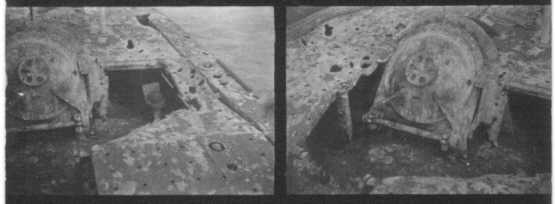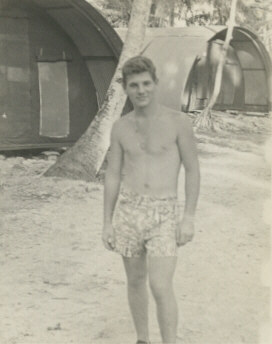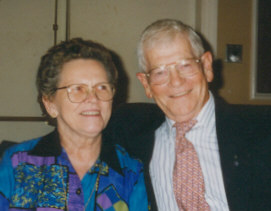|
|
|
|
| The
following related information is from
Submarine Operations of W.W.II, page 426:
"BURT'S BROOMS" (Operation Hotfoot) When Admiral Halsey was planning "Operation Stalemate" for the capture of Palau, plans were also projected for the first full-scale carrier-air attack on the Japanese mainland, The strike was to be made by Task Force Thirty-eight in November (1944), and the operation was titled "Hotfoot", Mitscher's aviators, of course, wished to approach the Tokyo area undetected, The greatest obstacle to a surprise raid was the picket-boat line which the Japanese maintained several hundred miles south and east of the Honshu coast, Although this picket fence could be blown to kindling by assaulting destroyers or fast-shooting planes, the presence of either DD's or carrier aircraft in the vicinity would undoubtedly alert the mainland. Some of the pickets were sure to get off a warning and Mitscher's punch would be "telegraphed". Submarines seemed the answer to this "Hotfoot" problem. SubPac blockaders had been attacking and sinking Japanese picket boats off Honshu since early in the war. A few more submarine attacks would not be likely to arouse suspicion. The "Hotfoot" plan included a submarine sweep in advance of TF38- a quick clean-up to clear the route of picket boats. Preparing for this "Hotfoot" detail, ComSubPac assembled a group of submarines at Saipan early in November. Skippers were readied and submarines were groomed for the impending mission. Supposedly this fleet-support mission was to last no longer than several weeks. But the enemy delayed the operation by throwing everything he could muster into the Philippines campaign. Mitscher's carriers were kept busy as Halsey pursued fleeing Japanese forces hither and yon and the naval airmen rained blows upon the foe in the Luzon area. So "Operation Hotfoot" was postponed from week to week and the submariners waiting at Saipan sat on their hands. Eventually the "Hotfoot" strike was canceled. Meantime to get his submarines into action, ComSubPac proposed an accessory plan, Why not have them sweep the strategic "Hotfoot" area as an overture to the delayed strike? CinCPac approved this plan, and the anti-picket sweep was ordered. Seven submarines - Ronquil, Burrfish, Sterlet, Silversides. Trigger, Tambor and Saury were organized into the wolf-pack. Commander T.B. "Burt" Klakring was placed in charge of the pack, And "Burts Brooms" left Saipan on November 10, with orders to sweep an avenue approximately 180 miles wide, over which Mitscher's carriers could move toward Japan with relative safety from detection. The submarines were directed to sink every picket boat encountered and to "leave no holidays." The "Brooms" went out to raise a dust, but the sweeping proved more of a task than expected. Bad weather kicked up the November ocean and sent green seas booming over decks and conning towers. Accurate gunnery was next to impossible. A submarine's low freeboard restricts employment of the deck gun, for the gun crew can keep its footing only in comparatively calm water. Buffeted by foam capped seas, the "Brooms" ploughed into the Japanese picket line. The targets bobbed and jumped like bubbles in a kettle, and the submarines bounced, rolled and bucked like birch canoes in a rapids. Clutching their leaping mounts, the sub gunners saw black spots before their eyes. Only four picket boats were sunk, and those at considerable risk of life and limb. In the bargain, the operation backfired, Either the pickets were unduly alarmed by the sweep, or the Japanese coast guards grasped the opportunity to test their A/S system. At any rate, all available planes and patrol craft were rushed to the threatened area. Instead of clearing an avenue, the sweep attracted attention and multiplied the swarm of pickets in the target area. As this result was the antithesis of the one desired, it was apparent that future sweeps would require different tactics. Also apparent was the fact that gun attacks could not be successfully conducted in rough seas by submarine gunners who had to cling to their mounts like bronco busters "Pulling Leather." Several "Broom" gunners were almost swept overboard a type of sweeping that was not in the assignment. The Japanese trawlers in the picket line were heavily armed and the attacking submarines encountered unexpectedly hot fire. One man aboard Tambor and two aboard Burrfish were wounded. Ronquil damaged her own stern with a 5-inch shell. Wrenched shoulders, Charley horses, and bruised shins were minor casualties. Liniment and adhesive tape were nothing to pointers. trainers and ammunition passers, but the surface actions were too risky to justify the meager accomplishment. All in all "Burts Brooms" had a knockabout time of it, but the experience was informative and therefore valuable. Headquarters learned that a voice radio better than the one in current use was needed. So were heavier deck guns. Future picket-boat sweepers would be provided with adequate weapons, more ammunition, and better protection. Hope this helps, Bill said he didn't think it was that big of a deal, guess the WWII vets have a hard time fathoming how much we want the information only they can give us about our qual boats.
|
The
following is the text from a Ron Martini BBS post made by Joe MacDonald
on February 03, 2001. It provides some background on how all this
information came together:
|
|
|
| Thanks to Joe MacDonald (JoeMac) for the idea for this page and for coordinating with Bill Blessing who was aboard Ronquil when it all happened. |



